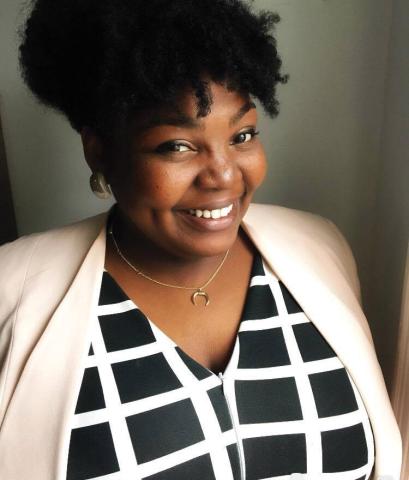The Curious Classroom
Alumna's new educational program focused on critical thinking, current events.
Should scientists be able to modify human genes? Should it be illegal to publish fake news? Should school districts ban contact sports with potential for concussions?
Thanks to a new program developed by Rose Pierre-Louis ’15 and her colleagues at Connecticut Public Radio, students are grappling with such hot-button issues in classrooms across the state.
Called Thinkalong, the program teaches media literacy and debate skills to middle and high school students in a three-step process: investigate, contemplate, debate.
As Pierre-Louis explains, “We’re building skills for life—teaching students how to speak about their opinions in an informed way, showing them how to analyze media messages, and connecting them with other students online where they can practice these skills in a safe, virtual place.”
As investigators, students are given three pieces of news content from a variety of media and from different sides of the story. The fake news module, for example, includes a PBS News Hour video that explains what fake news is and how it spreads, a radio story about a purveyor of fake news and his defense of the practice, and an article about someone whose life was disrupted by a fake news story.
Next, Thinkalong challenges students to think hard about their sources. Using questions developed by the Center for Media Literacy, they contemplate a range of issues about what they’ve read and seen: Who made this? Why? How might other people think about this? What techniques are being used to catch my attention?
Finally, students test their opinions in structured debate, either in their classroom or in an online forum that connects classrooms across the state. “Our last online debate was two eighth-grade classrooms discussing modifying human genes in relation to the new research coming out about CRISPR,” she explains.
“A lot of people, students especially, think that a debate is time to butt heads,” says Pierre-Louis. “But really it’s about listening specifically to what someone is saying, writing it down, and responding. So building those listening skills is the No. 1 thing we do during the debates.”
To create the program, Pierre-Louis and colleagues asked teachers what Connecticut Public Radio could do to enhance the curriculum. “They told us,” she says, “that they wanted a way for students to see themselves in the media and to take charge and solve a problem.”
It’s no surprise, then, that teacher response is so positive. “What’s been shocking to me is the student side,” she says. “I expected a lot of groans. But whenever we hear student feedback, we hear, When are you coming back?”
For Pierre-Louis, that kind of enthusiasm comes, in no small part, from the topicality of the debates. She tells the story of a sixth-grade science class taking on the question of school districts banning contact sports. “It was October, and we were looking at stories about how different people were affected—parents and students—and what they think about banning football, soccer, and such.”
One student, guessing that the story dated to 2004, was amazed to be told that, no, it had come out just two months earlier, in August. “She was shocked that the story was so recent and that these issues are happening right now, in their world, in their neighborhood. I like to think that it made the learning deeper for her. The look of amazement on her face was enough to let me know that what we're doing
is working.”
Published on: 11/15/2018
